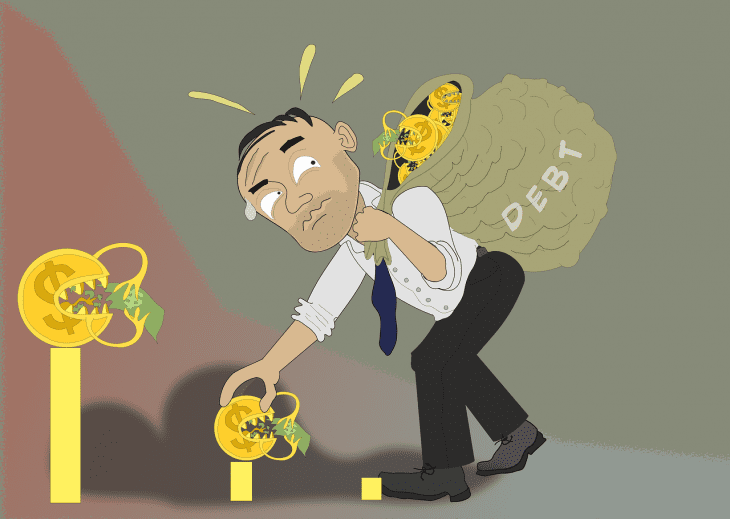The calculus of lending is relatively simple. An institution, be it a bank or another type of lender, has access to funds at cheap rates. It lends those funds, and typically adds an interest margin.
The margin covers the cost of funds used to lend, the operational costs of lending, and the risks associated with it. In other words, Net Income = Interest Revenue – Interest Expenses – Net Non-Interest Expenses.
It is as simple as that.
Now, think of a basic bell curve, and you can see how FICO scores play a role in deciding who gets credit and who does not. For the lowest 20%, you have the highest credit risks. It represents those with poor credit, low income, or rough employment history; for the top 20%, you have the inverse.
The remaining 60% are near-prime or prime.
If you are engineering pricing for a basic Bank of America Cash Rewards card, a Chase Freedom card, or a Discover It Card, you will focus on the 60% group. That is the U.S. Consumer credit market, with roughly 80 million households.
There are plenty of prospective customers to go around for the many credit card issuers in the United States. The top 20% are more likely qualified for card products such as the Bank of America Premium Rewards Card, Chase Sapphire, or a high-line Discover It Card.
But, for the lower 20%, we have inordinate credit risk. In this group are those with undocumented or low income with a limited ability to repay, those that failed to manage prior credit responsibilities, and those who may have overextended their credit.
But, they still need credit to operate their household budgets.
Secured cards are a viable option for this segment, but similar to pre-paid cards, you need money to fund the account, so that locks out 58% of American households with less than $1,000 in savings.
With that in mind, consider an unexpected financial event like a broken-down car, a medical emergency, or some other household crisis. If you are Joe or Jane Consumer, there may be an immediate need for a temporary financial bridge, which brings us to today’s credit story from the Los Angeles Times.
The LA Times talks about the emergence of online installment lenders to service that niche. The fact of the matter is that U.S. consumers have more than $150 billion in installment loan debt, ranging from low-ticket financing at Walmart through Affirm to 5-digit debt consolidation loans from Goldman Sachs’ Marcus.
But the group of interest today are those consumers somewhere in between, with weak credit and need some short term cash.
- It’s called the online installment loan, a form of debt with much longer maturities but often the same sort of crippling, triple-digit interest rates.
- If the payday loan’s target audience is the nation’s poor, then the installment loan is geared toward all those working-class Americans who have seen their wages stagnate and unpaid bills pile up in the years since the Great Recession.
- In just a span of five years, online installment loans have gone from being a relatively niche offering to a red-hot industry.
- Non-prime borrowers now collectively owe about $50 billion on installment products, according to credit reporting firm TransUnion.
- In the process, they’re helping transform the way that a large swath of the country accesses debt. And they have done so without attracting the kind of public and regulatory backlash that hounded the payday loan.
- “Installment loans are a cash cow for creditors, but a devastating cost to borrowers,” said Margot Saunders, senior counsel for the National Consumer Law Center, a nonprofit advocacy group.
Eeew: The Payday Loan.
- Yet the shift came with a major consequence for borrowers.
- By changing how customers repaid their debts, subprime lenders were able to partly circumvent growing regulatory efforts intended to prevent families from falling into debt traps built on exorbitant fees and endless renewals.
- Whereas payday loans are typically paid back in one lump sum and in a matter of weeks, terms on installment loans can range anywhere from four to 60 months, ostensibly allowing borrowers to take on larger amounts of personal debt.
Online installment loans are a step above payday loans.
For subprime lender Enova International Inc., outstanding installment loans averaged $2,123 in the second quarter, versus $420 for short-term products, according to a recent regulatory filing.
- Larger loans have allowed many installment lenders to charge interest rates well in the triple digits. In many states, Enova’s NetCredit platform offers annual percentage rates between 34% and 155%.
- Between Enova and rival online lender Elevate Credit Inc., write-offs for installment loans in the first half of the year averaged about 12% of the total outstanding, well above the 3.6% of the credit card industry.
- “With high-cost credit, you’re only serving people that won’t qualify for other types of credit, so you’re already in a hardship situation,” said John Hecht, an analyst at Jefferies LLC. “Companies have to price for that.”
The bell curve works in credit, allowing you to contain costs; risk is an expense that lenders need to allocate directly towards those who present it. Costs will be more for riskier credits. The facts are simple, and though Shakespeare’s advice through Polonius in Hamlet may sound harsh, is speaks volumes.
“Neither a borrower nor a lender be; / For loan oft loses both itself and friend.
Overview by Brian Riley, Director, Credit Advisory Service at Mercator Advisory Group
